Developing Innovative Transport Systems for New Cities: Best Practices for Cities Embracing Emerging Mobility Trends and Innovations
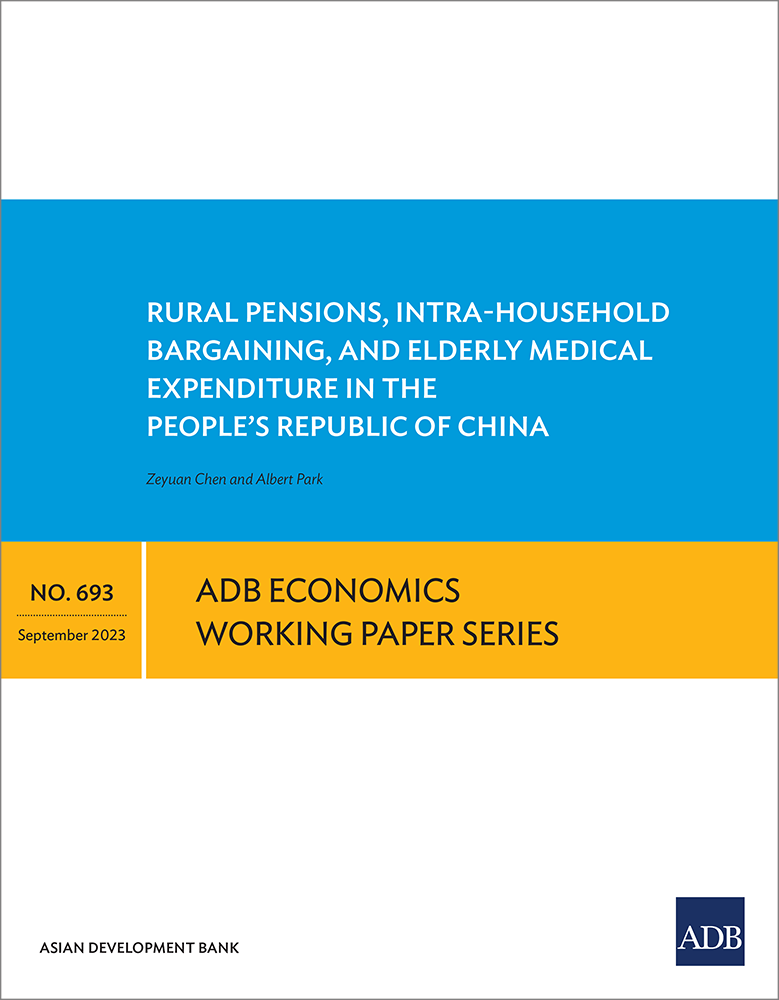

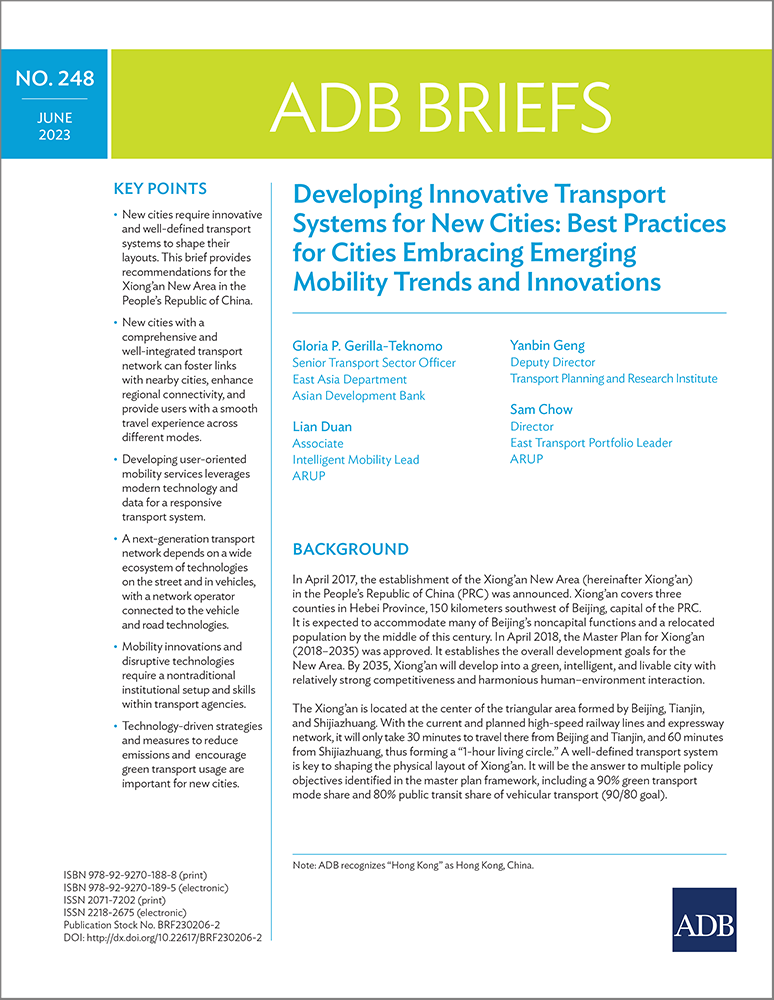
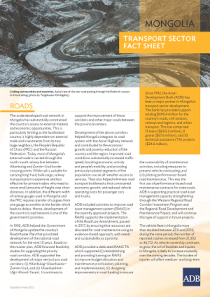
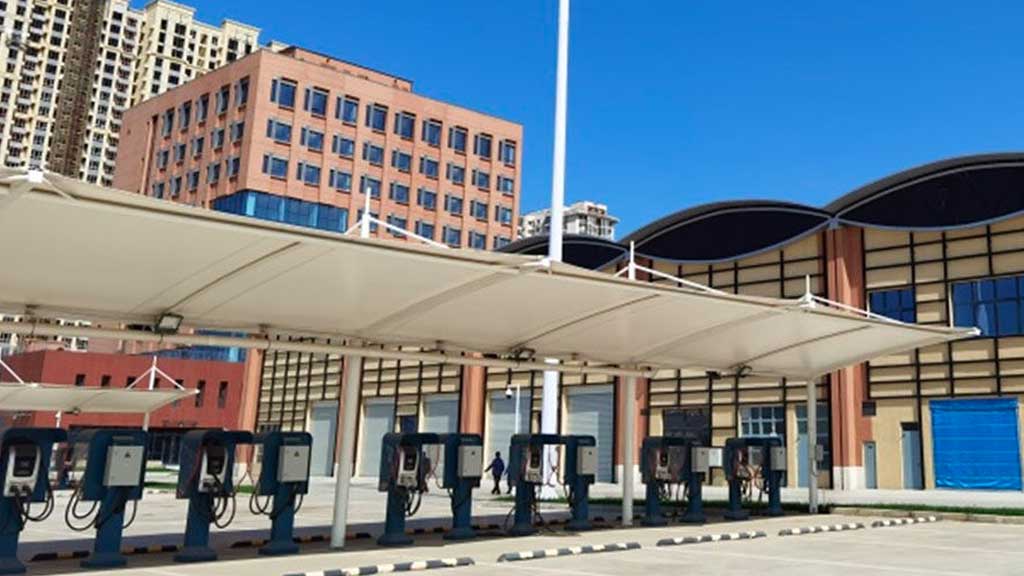
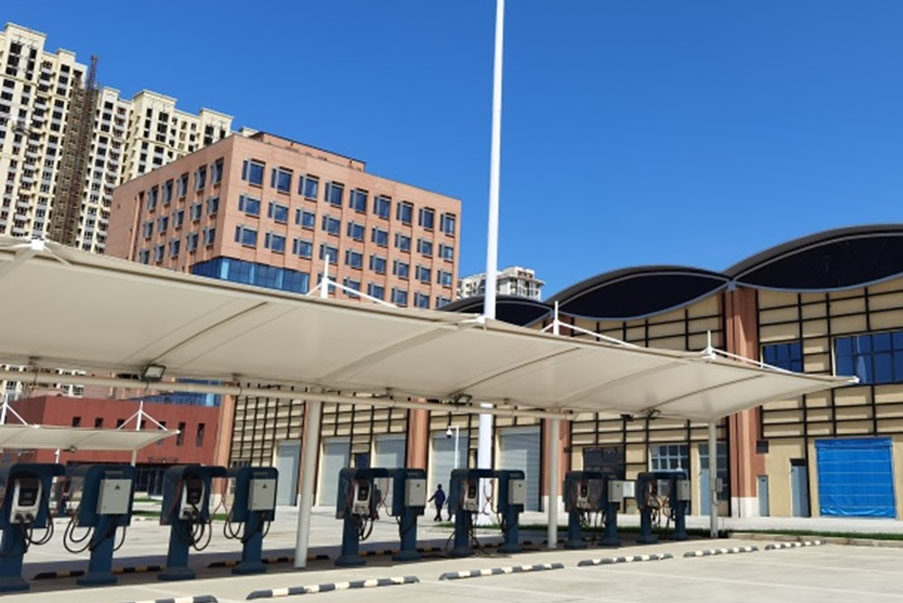
A pilot project helps Xi’an in the PRC hurdle mobility and environmental problems through multimodal and smart transport solutions.
Overview
An Asian Development Bank-funded project in the PRC demonstrated a comprehensive urban transport solution for a growing metropolis by providing better-connected road networks, well-equipped nonmotorized transport facilities, an intelligent transport system, an effective vehicle emission monitoring and control system, and road safety education. The pilot project helped deliver more efficient, safer, and greener transport services to the nearly 13 million residents of Xi’an city in Shaanxi province.
Project information
43032-013: Xi’an Urban Road Network Improvement Project in the People’s Republic of China
Project snapshot
Context
Xi’an, the capital of Shaanxi Province, is expanding and developing rapidly, and it has become the most important growth pole in the northwestern region of the PRC. From 2011 to 2020, the city population grew 50% from 8.5 million, while the number of registered motor vehicles more than doubled to 3.7 million from 1.4 million.
Challenge
Rapid economic and population growth have led to overcrowding in the historic walled city. There is increased demand for new offices, commercial space, and social infrastructure in the area between the Second Ring Road and the Third Ring Road on the city’s periphery. The change in traffic patterns and surging transport requirements combined with limited connectivity created bottlenecks that could constrain economic growth and development.
The city’s traffic control center primarily covered areas inside the Second Ring Road and lacks equipment in the new areas of urban growth. This resulted in poor system management, policing and enforcement issues, conflict between vehicles and pedestrians, and a system that failed to give proper priority to public transport and emergency vehicles.
A lack of suitable equipment, capacity, and enforcement also left Xi’an struggling to regulate vehicle standards, driver behavior, and emissions in the face of mounting traffic congestion.
Weak interagency coordination compounded the city’s transport woes. It also contributed to the lack of integration between various modes of travel, especially between public transport and nonmotorized modes used by the poor, who walk or use bicycles for most of their trips.
In addition, the involuntary resettlement impact of the project was significant. Over 230,000 square meter (m2) residential and commercial buildings had to be demolished to give way to road network improvements and multimodal interchanges. About 1,000 residents and over 8,500 employees of 25 enterprises were affected.
Solutions
The Xi’an Urban Road Network Improvement Project was designed in close consultation with transport authorities to provide a sustainable and integrated solution to urban transport problems. Efforts focused on improving road network efficiency and road safety, fostering multimodal transport, and bringing in intelligent technologies in traffic management and vehicle emission control.
The project provided three missing road links with a total length of 8 kilometers between the Second Ring Road and the Third Ring Road and improved the connection of the arterial road network. It also rehabilitated five interchanges along with about 17 km of bus priority lanes and 16 km of nonmotorized lanes. This improved the efficiency of the transport system for all road users in the city.
The project rehabilitated 125 intersections or mid-blocks, including upgrading pedestrian traffic signals, markings, and signage. A road safety education program was conducted for more than 94,000 people, including students, residents, couriers, and drivers. In addition, the project provided 436,000 reflective stickers to nonmotorized road users and established a coordination mechanism between schools and traffic police on traffic safety education in the vicinity of schools.
Three bus hubs were developed, and 100 electric buses were purchased and services were improved to promote public transit. To address parking space shortages, four automatic multi-level parking lots, including one in the North Railway Station bus hub and one underground parking lot were built.
The project installed intelligent transport system equipment, including variable message signs, microwave detectors, close circuit televisions, red light running cameras, and speed violation cameras. It also incorporated new technology, such as green wave traffic controls, which synchronize traffic lights on the busiest streets to allow vehicles to drive through a sequence of green traffic lights.
Vehicle emission detecting systems, air quality and noise monitoring devices, and control centers were established, and law enforcement vehicles were deployed. These measures were supported by the development of a coordination mechanism between environmental authorities and traffic police on vehicle emissions control.
A special task force for land acquisition and resettlement implementation was established at the early stage of the project implementation. It consisted of 77 officials from municipal governments and the concerned district governments. The resettlement task force worked closely with subdistrict offices and affected villages engaged in resettlement activities. Regular meetings and close coordination at all levels ensured successful implementation of resettlement efforts.
Results
The project demonstrated sustainable urban transport solutions not only for other large cities in the PRC but also for the region. It reduced traffic congestion and accidents as well as vehicle emissions.
More efficient urban transport
The effective implementation of the project reduced traffic congestion. The average vehicle speed reached 27.1 km/hour at the project corridors, compared to only 14.5 km/hour before the project. Designating bus priority corridors also increased average speed to 25.4 km/hour from 14.0 km/hour.
A safer urban transport system, particularly for pedestrians
At project completion, the annual traffic accident rate dropped by 48% to about eight cases per 10,000 vehicles in 2019 from the 2011 baseline of 15.7. Moreover, the annual fatality rate in traffic accidents was reduced to 1 person per 10,000 vehicles in 2019 from the 2011 baseline of 3.7. Overall, the concept of giving pedestrians priority gained prominence and wider understanding after the implementation of the project.
Lower vehicle emissions
The annual average nitrogen oxide emission dropped by 59.3% to about 116 tons per 10,000 vehicles in 2019 from the 2011 baseline of 287.2. The passing rate of fix-spot vehicle emission tests was above 95%, and that of random on-road tests was 94.3% in 2019, above the 80% target.
Better and greener bus system and transferring services
The project supported 40 new bus routes after the construction of three bus hubs and the provision of 100 new electric buses that strengthened the efficiency of a more environmentally friendly public transportation system. City residents, particularly those living in peripheral areas, have substantially benefited from the project.
Minimized resettlement impact
A total of 117,925 m2 residential house were demolished, 3.6% less than 122,354 m2 in the updated resettlement plans (URPs). A total of 114,900 m2 enterprise buildings were demolished, 8.6% more than 105,828 m2 in URPs. Consequently, 999 residents and 8,549 employees were affected during project implementation, decreased by 22% and increased by 24% than those in the URPs, respectively. The average growth in per capita net income of the affected households increased by 38.1% from 2013 to 2020, higher than the average growth in Xi’an.
Lessons
It is important to carefully plan for potential difficulties in land acquisitions and demolitions when projects target urbanized central or peripheral areas of densely populated cities. Through due diligence during project preparation with a focus on on-ground and underground structures, including housing property rights, land ownership and pipes networks are essential for the timely delivery of the project’s development impact.
Despite its modest budget ($300,000), the success and outreach of the road safety education program showed that important social impacts can be achieved even with limited resources if designed and implemented wisely. Education programs have the potential to trigger similar campaigns in other areas of the city. For instance, following ADB’s successful pilot, traffic police conducted additional education programs that significantly contributed to the improvement of road safety in Xi’an. This experience also highlights the relevance of including soft components in infrastructure projects, which result in social benefits for a greater number of individuals beyond the project area. In this process, active dialogue and involvement of local authorities are key.
Asian Development Bank (ADB). 2011. Report and Recommendations of the President to the Board of Directors: Proposed Loan to the People’s Republic of China for the Xi’an Urban Road Network Improvement Project. Manila.
ADB. 2021. Completion Report: People’s Republic of China: Xi’an Urban Road Network Improvement Project. Manila.

Senior Portfolio Management Officer, East Asia Department, ADB
This blog is reproduced from Development Asia.
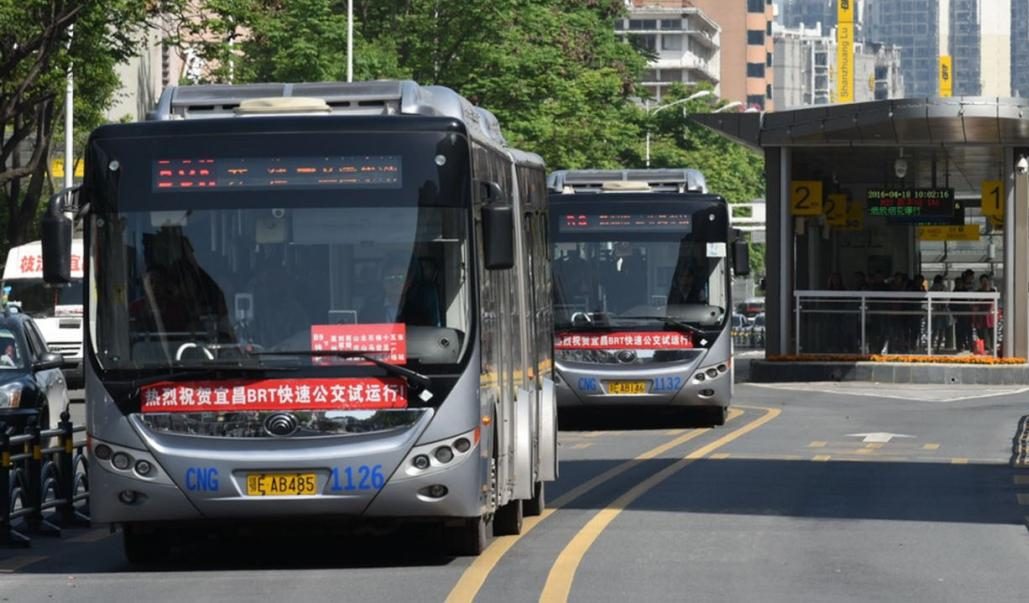

In the PRC, a leasing program is helping reduce pollution by putting more low-cost, efficient, and clean buses on the road.
Overview
Greater prosperity in rapidly growing urban areas in the PRC has led to increased demand for private vehicles. More cars on the road caused extreme traffic and dangerous levels of air pollution in many cities across the country.
In response, the government has been encouraging commuters to shift from private to public transport while promoting low-cost, efficient, clean, and sustainable bus transport to address air pollution.
To support the government’s efforts in reducing the climate impact of urbanization, the ADB launched a leasing program to help public transport operators to transition to buses that run on clean fuel.
Project information
Project snapshot
Context
High capital costs and financing constraints have limited the expansion of public transport in the country, particularly green bus transport. Local bus operators typically face financing challenges and would operate at a loss without government subsidies as fares are kept low to ensure affordability.
Financial leasing can be an effective option to supplement bank financing since banks usually do not accept buses as collateral. Leasing allows bus operators to tap additional financing that has longer tenors and potentially more competitive rates than bank loans. Supported by the government’s policies and regulations, the leasing industry grew in recent years. However, financial leasing companies need access to long-term funding to reduce the risk of an asset–liability mismatch. They are constrained by their limited access to the capital markets and to long-term bank loans. They rely mostly on short-term borrowings. With long-term funds, leasing companies can operate sustainably.
Challenges
High capital costs and financing constraints have limited the expansion of public transport in the country, particularly green bus transport. Local bus operators typically face financing challenges and would operate at a loss without government subsidies as fares are kept low to ensure affordability.
Financial leasing can be an effective option to supplement bank financing since banks usually do not accept buses as collateral. Leasing allows bus operators to tap additional financing that has longer tenors and potentially more competitive rates than bank loans. Supported by the government’s policies and regulations, the leasing industry grew in recent years. However, financial leasing companies need access to long-term funding to reduce the risk of an asset–liability mismatch. They are constrained by their limited access to the capital markets and to long-term bank loans. They rely mostly on short-term borrowings. With long-term funds, leasing companies can operate sustainably.
Solutions
In 2013, ADB implemented a $275 million loan program that aimed to support financial leasing companies in the funding of clean buses in the PRC. The program offered loans with tenors of up to 8 years to support the leasing of buses running on cleaner fuel, hybrid buses with fuel-saving rates of more than 10%, and electric buses. The eligibility criteria for use of loan proceeds were gradually tightened during the implementation of the program with the last participating leasing companies only financing pure electric buses with zero road emission.
The accredited financial leasing companies under the loan program are Far East Horizon Limited (FEH), which received $100 million; Industrial Bank Financial Leasing Company Limited (IBFL), $100 million; and Everbright Finance Leasing Company Limited (EFL), $75 million—together fully utilizing the approved program amount.
A $2.3 million technical assistance project, financed by the Global Environmental Facility, was implemented in parallel to the ADB loan program. It aimed to improve capacities in the selection, management, and operation of clean buses. It also provided bus operators and transport authorities with the tools for measuring GHG emissions. Based on a review of international technologies and a survey of the performance of clean bus companies, the project recommended improvements to expand clean bus usage and advised on maintenance and management reporting using IT systems.
ADB also supported two follow-up projects. It approved a $200 million loan to Minsheng Financial Leasing Co. Ltd in 2017 to finance the leasing or purchasing of green buses, including electric bus batteries, with geographical focus on the less developed central and western regions of the PRC. It also approved a $100 million loan to the Bank of Communications Financial Leasing Co. Ltd. in 2019 to fund the lease or purchase of new-energy buses which, as defined by the Government, include hybrid buses, battery-only electric buses, fuel-cell electric buses, and ultracapacitor buses.
Results
Increased public transport services and reduced greenhouse gas emissions.
The first loan program, through the three participating financial leasing companies, added 6,504 clean buses as of 2018, exceeding the target of 5,000. FEH financed 2,769 buses; IBFL covered 2,745 buses; and EFL funded 99 buses, all of which were electric buses. The number of bus operators supported by this program increased to 39, far exceeding the target of 15, with about 38% located in less-developed central and western provinces. The deployment of clean buses resulted in 546 million vehicle-kilometers of green bus transportation services, avoiding around 1.71 million tons of GHG emissions annually.
By 2019, 59% of all buses in the PRC were already green or new energy buses.
Better access to finance for leasing companies and bus operators.
The five financial leasing companies were able to access long-term funds, which increased their ability to offer long-term leases to bus operators, meeting the dual objectives of assisting the development of green public transport and the growth of the leasing industry in the PRC.
Lessons
Leasing is an effective financing modality to facilitate access to long-term funding. The leasing industry must be developed through direct financing and by demonstrating the viability of leasing for clean bus deployment. Likewise, mobilizing commercial finance can contribute to the success of a government’s green initiatives, including subsidies.
References
ADB. 2012. Report and Recommendation of the President to the Board of Directors: Proposed Loan Program for Clean Bus Leasing in the People’s Republic of China. Manila.
ADB. 2016. Extended Annual Review Report: Senior Loan Clean Bus Leasing in the People’s Republic of China. Manila.
ADB. 2017. Extended Annual Review Report: Industrial Bank Financial Leasing – Senior Loan Clean Bus Leasing in the People’s Republic of China. Manila.
ADB. 2019. Extended Annual Review Report: Everbright Financial Leasing Company Limited Loan Program for Clean Bus Leasing in the People’s Republic of China. Manila.
ADB. 2019. Technical Assistance Completion Report: Improving Clean Bus Operations and Management in the People’s Republic of China. Manila.

Principal Investment Specialist, Private Sector Operations Department, ADB
This blog is reproduced from Development Asia.
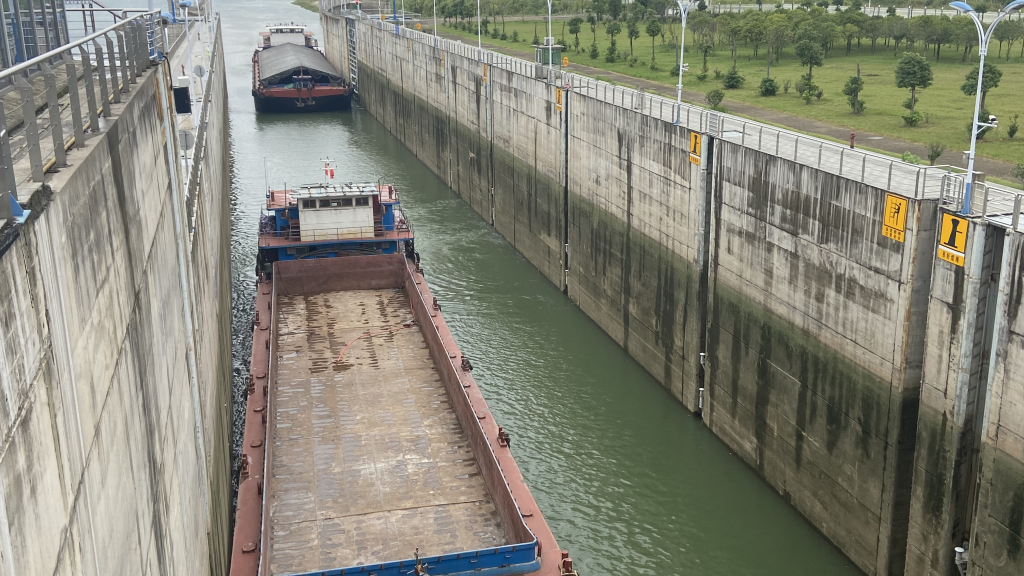

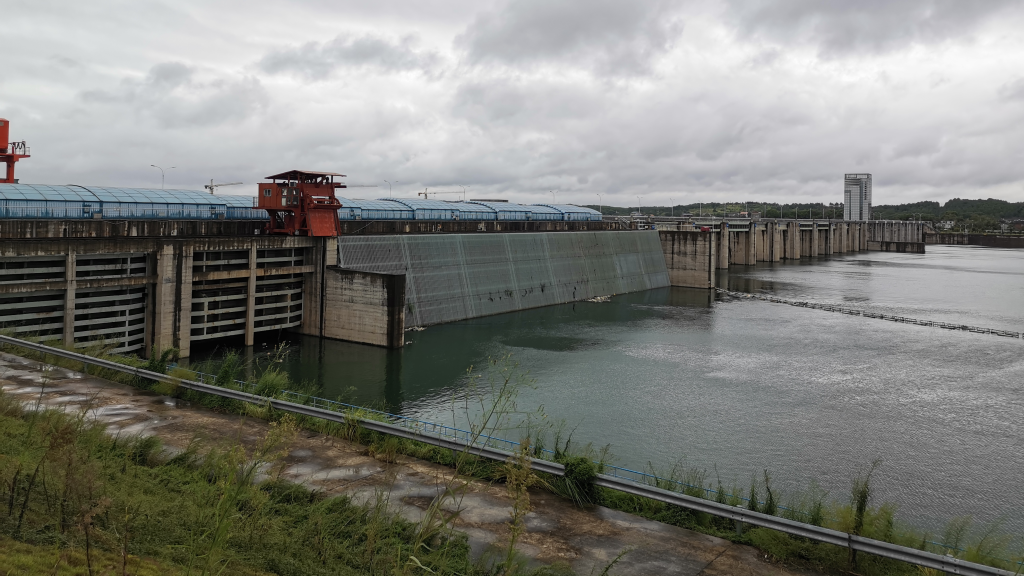
Hunan’s population and industry are concentrated along the Xiang River, which offers great opportunities for shipping minerals and agricultural products from the PRC’s interior to its major eastern seaboard markets.
To enhance inland water transport in Hunan Province, PRC, ADB helped finance the construction of a navigation–cum–hydropower complex, an inland port, and landing stations in remote rural areas.
ADB improved the low-carbon waterway transport system on the Xiang River in Hunan Province, PRC, and contributed to an efficient, safe, affordable, and sustainable inland waterway transport system in the province.
Hunan in the People’s Republic of China (PRC) is a landlocked province with one of the longest provincial inland waterway transport networks in the country. Yet in 2009, the network carried only 10% of the province’s overall freight, since only a small fraction of it could accommodate vessels of carrying capacity of 1,000 tons or more.
Central to Hunan’s waterway transport is the Xiang River, which connects six of Hunan’s cities with the PRC’s eastern seaboard and forms part of a bigger network that starts at the Yangtze River.
“Hunan’s population and industry are concentrated along the Xiang River, which offers great opportunities for shipping minerals and agricultural products from the PRC’s interior to its major eastern seaboard markets,” says Asian Development Bank (ADB) Senior Transport Specialist Nicolas Dei Castelli. “But passage for large vessels was held back by limited water depth and long rocky shoals along the Xiang River’s middle and upper reaches as well as obsolete and insufficient infrastructure and loading facilities in the river’s ports.”
To enhance inland water transport in the province, ADB helped finance the construction of a navigation–cum–hydropower complex in Hunan, an inland port, and landing stations in remote rural areas, while providing associated institutional strengthening.
ADB approved in December 2012 a $150 million loan toward the total estimated cost of more than $393 million for the Hunan Xiangjiang Inland Waterway Transport Project, which was planned to be carried out over the following 5 years.
The biggest part of the project was the construction of a navigation and hydropower complex about 39 kilometers upstream of Hengyang City.
The project’s barrage, which forms part of the navigation complex, has 17 sluice gates—mechanisms that can be opened or closed to control river flow. For vessels to pass the barrage, they go through a ship lock which enables them to navigate through steep changes in the level of the river. The project’s ship lock is located on one side of the river, and was designed to hold up to four 1,000–ton vessels.
The project included construction of a run–of–the–river hydropower generation plant with a total installed capacity of 90 megawatts (MW) and normal annual energy output of 358.2 million kilowatt–hours. “The entire barrage was designed to be multipurpose, with hydroelectricity generation providing revenue that would help the province recover the investment cost,” says Mr. Dei Castelli.
The ship lock was completed and opened to navigation in December 2014, and the four power generators started operation between December 2015 and September 2016. They have been connected to the grid with an annual production capacity of 350 million kilowatt-hours.
Cargo terminals in the project site had only main moorings and loading ramps for small vessels, with the biggest berth capable of receiving vessels with capacities of only 300 tons. The project sought to increase the port capacity of the province’s inland waterway network. Engineering designs for two cargo terminals, each with a 100 meter concrete berth were devised, although only one was needed—at Songbai.
The Songbai cargo berth began operations in 2017 and included a 1,000 deadweight tons (DWT) universal berth and a 470 meter access road. Apart from improving the berths, new facilities were added to the terminals, such as open cargo storage areas, warehouses, and workshops. Some 126 public landing stages were built along with 7,419 meters of guardrails and 26.8 kilometers of riverbank protection, giving rural communities better and safer access to the waterway. The project addressed women’s needs by promoting employment opportunities and their effective project participation through training and capacity building.
Also incorporated into the project design was a fish pass, to ensure that no fish and other aquatic animals will be carried into the hydropower turbines.
Improved inland waterway navigation has eliminated the “bottleneck” in the middle reaches of the Xiang River, allowing 1,000 DWT ships to navigate from Jinweizhou on the Xiang River to the Yangtze River. After completion, the average size of vessels navigating through the project site increased from 225 DWT in 2010 to 887 DWT in 2018.
“The project has improved the low-carbon waterway transport system on the Xiang River and contributed to an efficient, safe, affordable, and sustainable inland waterway transport system in the province,” says ADB Country Director in the PRC Yolanda Fernandez Lommen. “As ADB’s first inland waterway transport project in the PRC, it also demonstrated ADB’s commitment to focusing future transport sector support on more sustainable forms of transport.”
Transportation costs decreased by CNY0.039 (about half a US cent) per ton-km between 2012 and 2019, which will significantly boost regional economic development. Hengnan county, where the complex is located, achieved an annual growth rate of 99.33%, much higher than the provincial average of 71.86%. The income of rural residents in Hengyang and Yongzhou has also been growing much faster than that of urban residents, while income gaps between urban and rural residents have narrowed significantly.
“Inland waterway transport can be an efficient, cost-effective, and green transport alternative, especially for cargo services,” says ADB Director of the Sustainable Infrastructure Division in the East Asia Department Sujata Gupta. “As this project shows, a well-developed inland waterway network provides people and businesses with a more reliable option to transport their goods, and maximize opportunities for interconnection.”

Principal Communications Specialist, Department of Communications, ADB
This article is reproduced from Asian Development Bank.
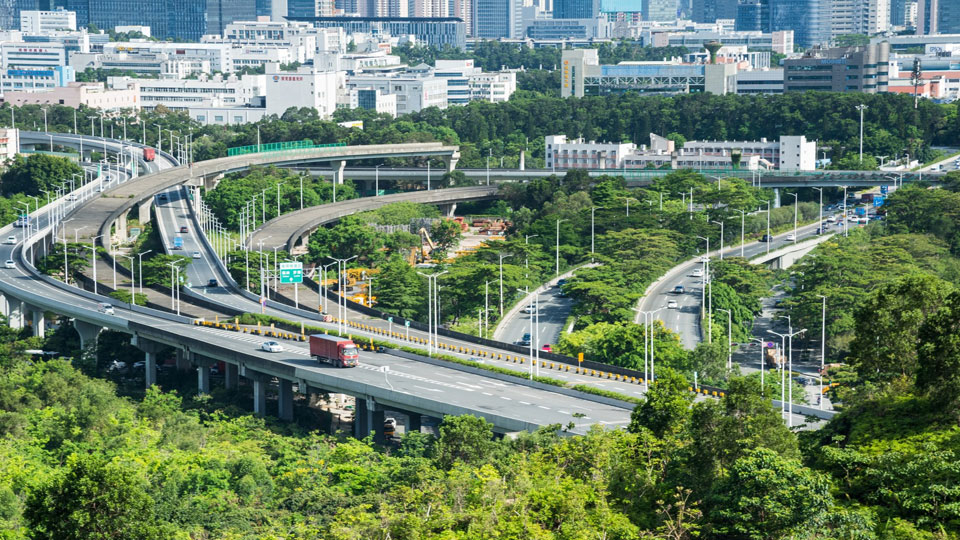
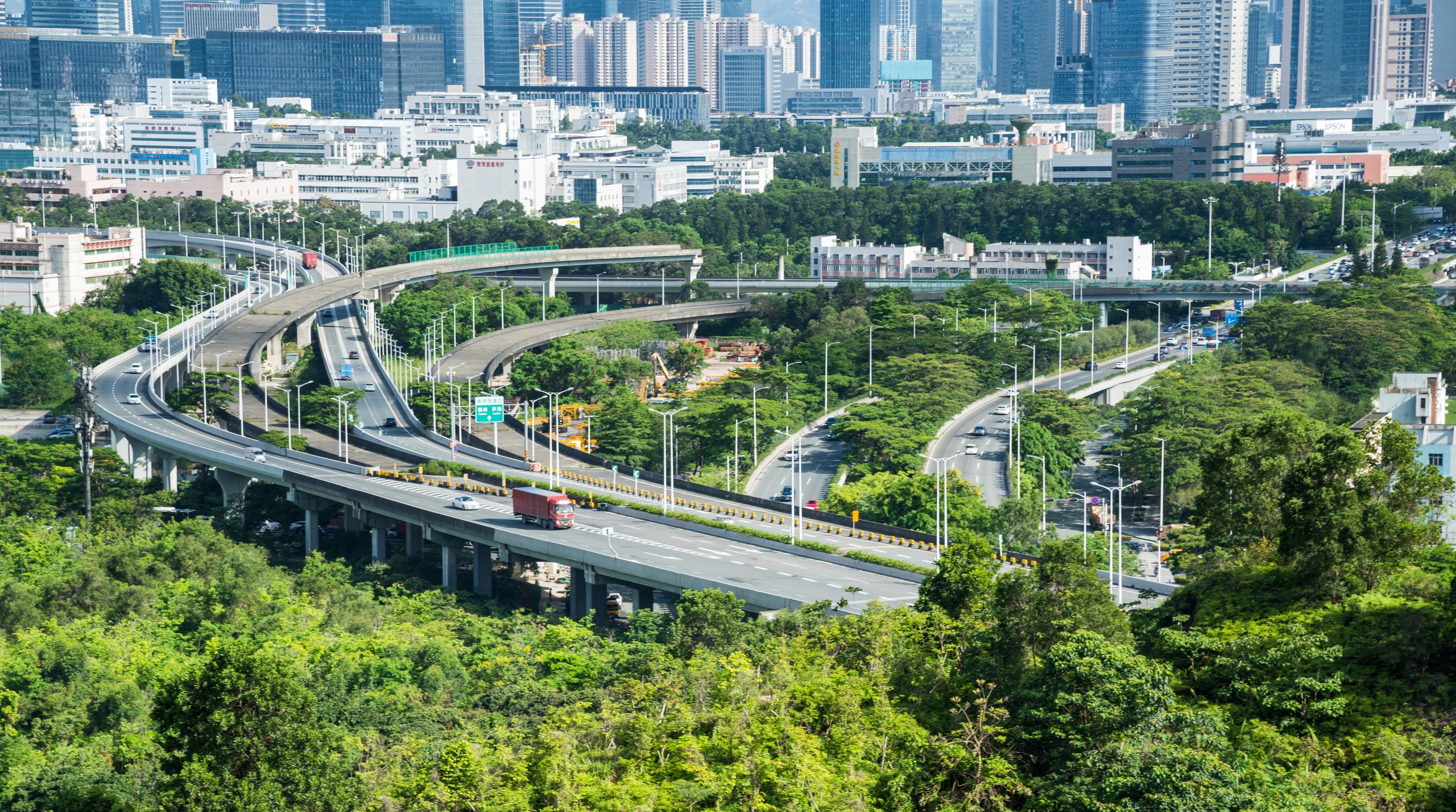
The right blend of public and private sector support, along with long-term transport strategies and anchor institutions such as schools and hospitals, are some of the basic ingredients needed for a successful new city.
The United Nations estimates that 60% of the world’s population will live in cities by 2030. People tend to flock to long established cities which causes overpopulation in megacities. Today, one in five people worldwide lives in a city with more than 1 million inhabitants and this is growing. One solution to the overpopulation in megacities is to plan and develop new cities. Since 2000, more than 40 countries have built more than 200 new cities.
Strategically located, purpose-built cities are intended to become tomorrow’s trade, finance, logistics, technology, or commercial centers, focusing on long-term economic growth that could challenge existing global networks. Some examples of new city developments include Xiong’an New Area in the People’s Republic of China, designed to become a hub for research, education, and high technology research and development; Sri Lanka’s Colombo Port City, envisioned as a major financial center in the sub-continent; and Sejong, Republic of Korea, which is being built to relocate the central government functions from Seoul.
How can we gauge if a new city will become successful in achieving its primary development objectives? Looking at several city developments, there are several factors for success:
Presence of anchor institutions and transport infrastructure. Basic facilities such as schools, hospitals, and shopping centers should be developed and supplied in time to attract residents. Irvine in Southern California was planned to include a branch of the University of California which made the city grow. Also, transportation channels such as highways and mass transit systems must be available.
Land development can also be coordinated with rail investments. A housing development in Tama, Japan, was planned and built together with the rail line, and this contributed to its growth.
There should be a balance for both the supply of infrastructure and the demand for it. Developers must be cautious about over-building before there is demand and delayed supply of infrastructure and services that could slow down the growth of new cities. For example, the construction of rail transit in Tsukuba lagged in the early years, resulting in time-consuming traffic and relatively weak connection with Tokyo.
Strong central and local government policies. Governance structure and support plays a role in new city growth. New developments rely on support from higher levels of government, often including compulsory land expropriation, the establishment of a specialized development company, and financial support. Stable government support is essential for the success of the new city.
However, higher level government leadership or central government policy could change over the course of the development, which risks the momentum of growth, as in the case of Sejong in the Republic of Korea. Sejong was planned to become the new capital and promote the regional development of other areas of the country. However, a court ruled that the capital must remain in Seoul in response to a complaint filed by the main opposition.
The sustainability of new city growth is always a challenge.
Since then, Sejong has lost its momentum, and the relocation is only half-done. A new city’s access to central government support is a big plus, but strong local institutions are needed for the area to grow its capacity and adapt to the evolving environment. Tsukuba, the city of science near Tokyo, illustrates the importance of local capacity development for sustained growth. The story of Tsukuba’s development suggests two key factors: strong support from the central government, and local strategies that are responsive to the changing circumstances. The former is key to the success for Tsukuba’s development in the first two decades, and the latter is essential for its sustained growth into today.
Enabling environment that allows business sector to flourish. While government planning and public sector expenditure is essential for new city growth, they alone are far from sufficient to grow a prosperous city. The ability of the private sector to participate and function smoothly is also an important dimension of new city development. In the United States, private developers have led the development of many successful suburban cities.
In the People’s Republic of China, Shenzhen’s success significantly benefited from the presence of an active private sector. The ability of the government to attract the private sector to work together has set the tone for new cities to grow. Kunshan, also in the People’s Republic of China, stands out because of the local government’s continuous willingness to innovate its services for the business sector.
The stories of Shenzhen and Kunshan show how local institutions, enabled by high-level governments or local governments, have laid down the foundation for the private sector to prosper. Some typical policies to attract private sector development include tax reductions and exemption for new businesses or high-tech companies.
Natural endowment is important but not a dominating factor. The natural attributes of an area are often perceived as an attraction for residents to move to a new development. Irvine in California, like other cities in Southern California, has been praised for its natural environment. Lake Kasumigaura, the second largest lake in Japan is located near Tsukuba. The presence of natural land or waterscapes is an advantage however, this is rarely a leading factor for a new city’s success. New cities tend to be planned at sub-prime locations because better locations have been already developed. If the other factors are present, natural endowment is not crucial to develop a new city.
The sustainability of new city growth is always a challenge. The economic environment may change, a rival city may thrive and compete, local residents and businesses may leave, and political support may disappear.
To address this, during the inflow of resources at the start of a new city development, leaders should lay out a clear path for local institutions to develop and take the lead. Local government, therefore, must constantly update its strategies and continually pursue an environment for the private sector to flourish.
The process of city development is complicated and dynamic but key factors can guide developers toward a sustainable and vibrant city.

Senior Transport Sector Officer, East Asia Department, ADB
This blog is reproduced from Asian Development Blog.
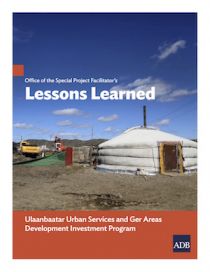
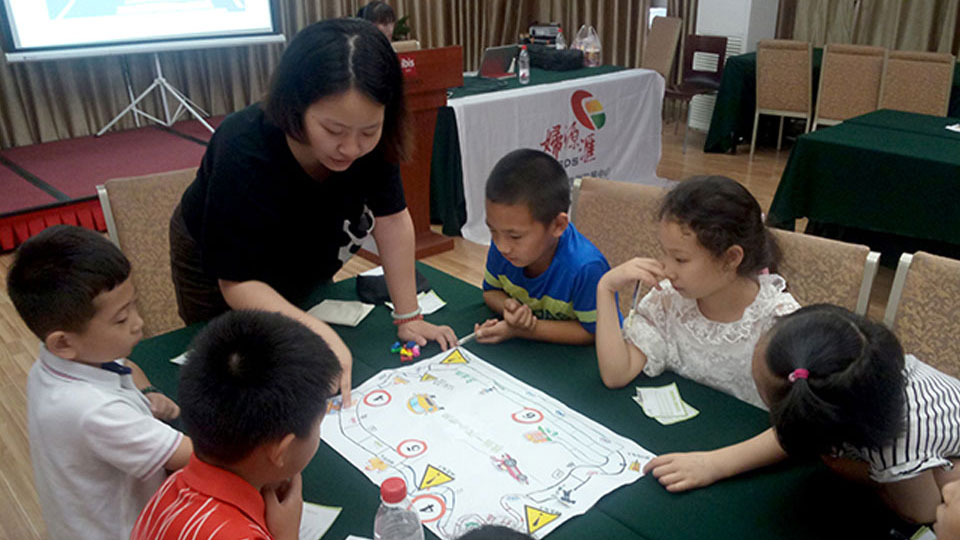

They are seen, they are important road users, and their voice and agency can help make roads safer.
Overview
Infrastructure improvements are key to improving road safety for children. Yet, it does not start or end there. Road safety interventions need to go beyond infrastructure to assist government agencies to better manage and enforce road safety, and improve education, vehicles, emergency response, and post-crash care. Interventions are more effective when combined across the system to guide users to act safely.
From 2015–2020, the Asian Development Bank (ADB) supported a project in the People’s Republic of China (PRC) that made system-wide improvements to road safety, including infrastructure, institutional strengthening, and education interventions. The perspective of children—and the different views of girls and boys—were made explicit in the process so that the risks for this group of road users were understood and addressed. For this, child-centered and participatory methodologies were used in three primary schools and their communities along #102 Provincial Highway in Xunyang County, South Shaanxi.
Project information
46042-002: Shaanxi Mountain Road Safety Demonstration Project
Project snapshot
Challenges
Often, age and gender nuances in road safety interventions are not very visible. Baselines—if at all—do not go beyond segregating respondents as males and females. Too few inquiries are pursued on whether females have safer or riskier traveling practices, how they cope with harassments and assault on streets, or especially whether there are considerations for children.
The assumption is, when road safety programs are aimed at parents, that children are automatically protected. In Asia, children are often seen as extensions of parents, and their opinions are not taken seriously. Though kids are considered as road users, baselines and resulting interventions tend to target parents as the audience for road safety information to be passed on to children, as they are considered responsible for moving kids safely.
However, road traffic injuries are among the leading causes of death globally for children and young people, 5–29 years. The risk is higher for the youngest bracket, 5 to 9 years—the age when children start going to primary school and become active road users.
In addition to age, girls and boys exhibit different characteristics in their pedestrian behaviors. Boys are more likely to play on the side of the road and girls are more likely to walk two or three abreast. More male pedestrians than females are involved in road traffic crashes, especially in younger age groups. More effort is needed to determine and understand contextual risk factors for road traffic injuries and fatalities of children with implications for prevention.
Context
The Shaanxi Mountain Road Safety Demonstration Project aims to reduce road crash fatalities and serious injuries and provide efficient and safe all-weather accessibility in Shaanxi. The project covers Ankang City, including Xunyang County and Hanbin District, as well as Shangnan County in Shangluo City, and involves road upgrade and rehabilitation, incorporating major safety design enhancements.
In Ankang City, the transport bureau understood that rehabilitated trunk and rural roads can increase speeding, and unless these are designed with safety for all road users and not just cars, the most vulnerable road users—pedestrians and cyclists—will be at risk. Further, introducing new facilities, such as zebra crossings, are unlikely to be effective if users do not recognize them or know how to use them. For this reason, the bureau commissioned consultants from Shaanxi Gender Development Solution to improve user understanding of the project infrastructure changes, improve road safety knowledge, and influence behavior. This included dedicated interventions for children in three schools: Xiaohe Central Primary School, Chengguan Central Primary School, and Zhaowan Central Primary School.
Current road safety education usually follows a didactic approach, focusing on providing knowledge-based information to teachers, parents, and generally, any adult that could influence children’s way of thinking and behaving. This framework assumes that when knowledge is provided to these adults, it will be passed on to the kids who are then expected to remember and apply it now and in the future.
Adults are also assumed to model improved road safety behaviors after learning about them for children to emulate. In addition to modeling behavior, parents of younger children who have lower awareness of road safety must exercise primary responsibility to practice safety on their behalf.
Key Findings
Using mixed methods—survey, observation, and interviews of 1,361 children, parents, and teachers, the project looked not just at road safety knowledge from the point of view of adults but also from children’s behavior and the factors that influence why people act the way they do. They then went further to try to understand the different perceptions and behaviors of boys and girls around roads and address these through more accurate and successful interventions.
Below are the key findings among primary to middle school students that helped shape the road safety education interventions:
Survey responses showed that students had high awareness of road safety. However, in practice, their actual actions revealed otherwise, with many students displaying risky behaviors on the road.
Solutions
The ADB-supported Shaanxi Mountain Road Safety Demonstration Project adopted child-centered methodologies, developing age-appropriate curriculum for three levels of primary school students, including story books, games, simulation, and group learning activities. These are the key lessons.
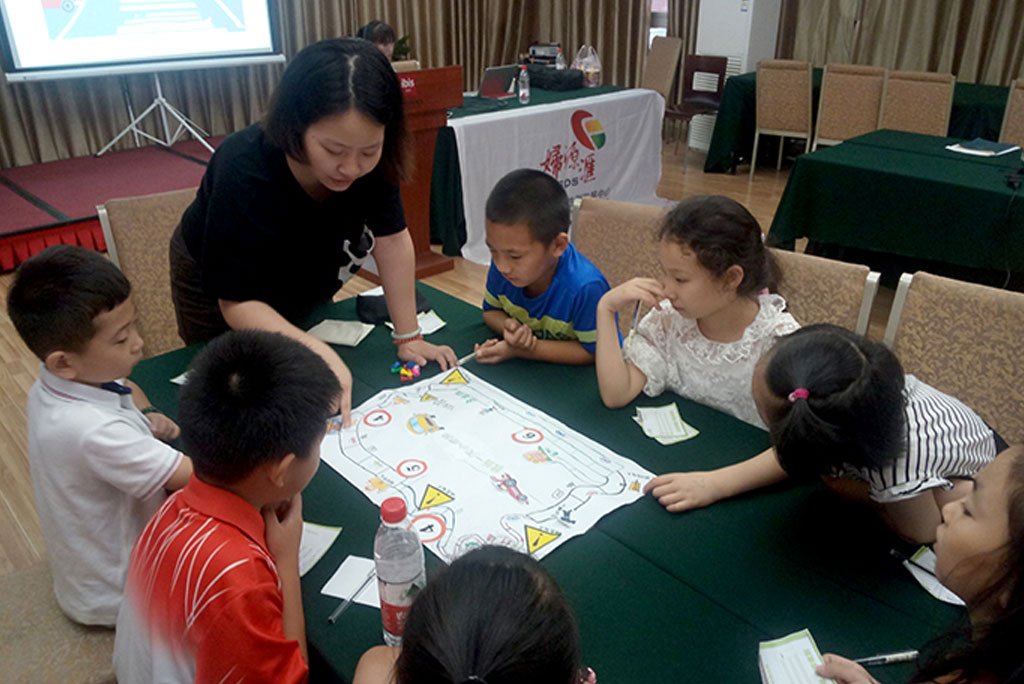 The project not only assessed children’s understanding of road safety but also studied their individual and collective road use habits. Photo credit: Shaanxi Gender Development Solution.
The project not only assessed children’s understanding of road safety but also studied their individual and collective road use habits. Photo credit: Shaanxi Gender Development Solution.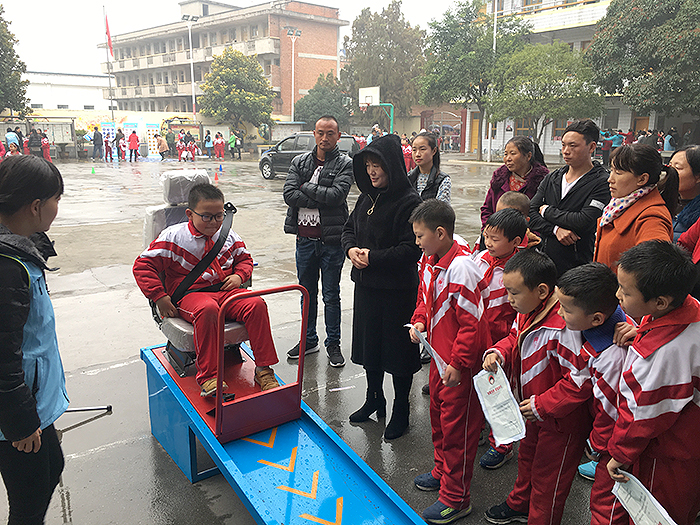 A kid tries on a seat belt at a simulation camp. Photo credit: Shaanxi Gender Development Solution.
A kid tries on a seat belt at a simulation camp. Photo credit: Shaanxi Gender Development Solution.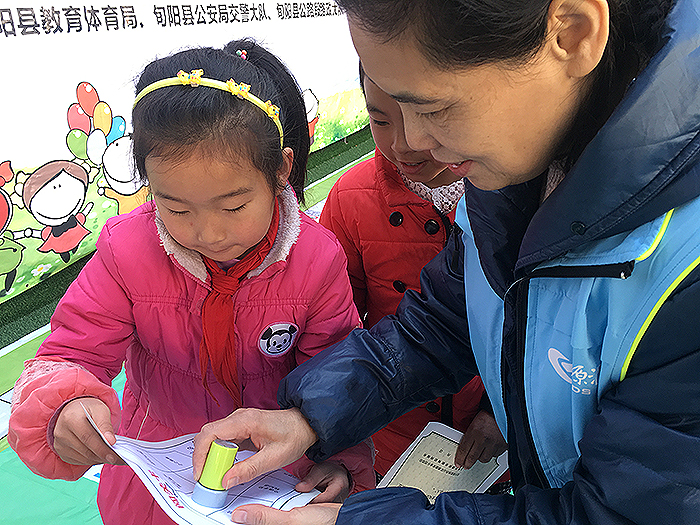 Girls get stamps on their pass cards. Photo credit: Shaanxi Gender Development Solution.
Girls get stamps on their pass cards. Photo credit: Shaanxi Gender Development Solution.The intervention was unique in that it tried to identify specific uses of the road by girls and boys, which provided granular insights to design the interactive games and experiential learning tools. This sends a powerful message to girls and boys—that they are seen, that they are important road users, and this child-centered approach was a factor in increasing their engagement during the various activities.
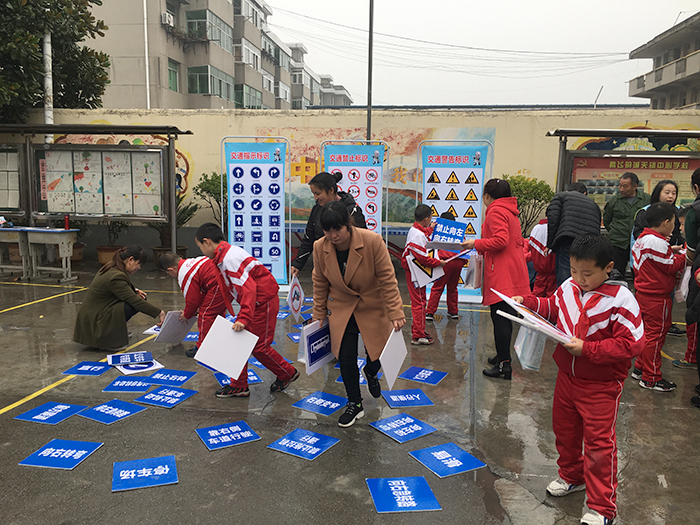 Children are tested on their understanding of transport signs through interactive activities. Photo credit: Shaanxi Gender Development Solution.
Children are tested on their understanding of transport signs through interactive activities. Photo credit: Shaanxi Gender Development Solution.The goal of the interactive experiences was to transform traffic safety behavior, including through role models. This also provided an opportunity to remodel gender roles. The performance and role plays were designed to debunk gender stereotypes, such as a police officer always being male or a parent bringing the child to school is always the mother. Girls were asked to play police officers and boys to play fathers taking children to school. This is a small detail in the overall activity but with likely strong implications on children’s and even adults’ perceptions.
The process itself took a gender-sensitive approach. In the past, recruiting and training parent-volunteers for traffic safety activities focused on grandmothers and mothers due to belief that it is mainly their responsibility to take care of children and participate in school activities. For this project, fathers were actively engaged. Beyond their role in modeling road safety, this again has implications to transform gender roles and model more balanced sharing of childcare responsibilities.
Outcomes
ADB. People’s Republic of China: Shaanxi Mountain Road Safety Demonstration Project.
H. Wang et al. 2018. Gender Differences in Children’s Pedestrian Behaviors: Developmental Effects. Journal of Safety Research. December. 67. pp 127–133.
M. Onieva-Garcia et al. 2016. Gender and Age Differences in Components of Traffic-Related Pedestrian Death Rates: Exposure, Risk of Crash, and Fatality Rate. Injury Epidemiology. 9 August. 3(1). pp 20.
World Health Organization. 2020. Road Traffic Injuries: Key Facts. 7 February.

Transport Specialist, East Asia Department, ADB

Social Development Specialist, East Asia Regional Department, ADB

Senior Communications Officer, Department of Communications, ADB
This blog is reproduced from Development Asia.
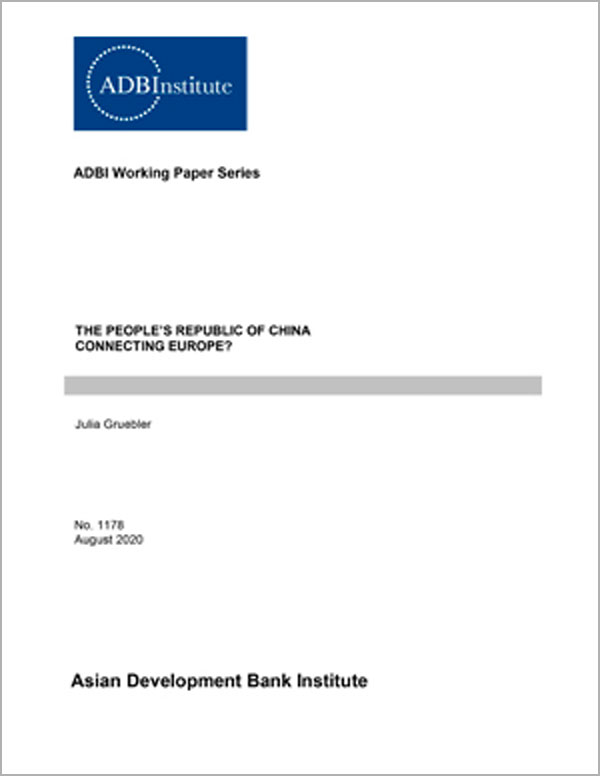
© 2024 Regional Knowledge Sharing Initiative. The views expressed on this website are those of the authors and presenters and do not necessarily reflect the views and policies of the Asian Development Bank (ADB), its Board of Governors, or the governments they represent. ADB does not guarantee the accuracy of the data in any documents and materials posted on this website and accepts no responsibility for any consequence of their use. By making any designation of or reference to a particular territory or geographic area, or by using the term “country” in any documents posted on this website, ADB does not intend to make any judgments as to the legal or other status of any territory or area.
